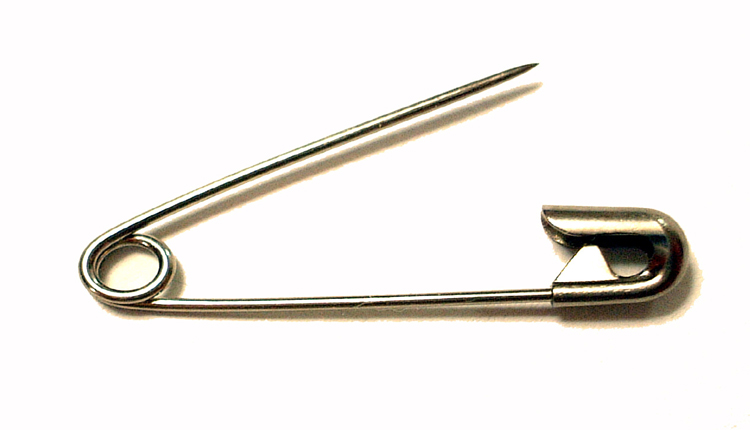New Delhi: We live among an endless number of upgrades and innovations, and yet, one lowly invention remains. The safety pin. The humble safety pin was not only invented by American mechanic Walter Hunt in 1849 but has also retained its basic design for almost 175 years. This is a historical rarity in design. On International Safety Pin Day (observed every year on April 10), the tale of this humble tool—created from a $15 debt and still living on in its original form—remains fascinating.
The inspiration for the safety pin is as humble as it looks. Hunt, a prolific but under-worked inventor, thought about how to repay a friend. He sat in his New York workshop bending brass wire one day in October 1940. In a matter of three hours he fashioned a gadget that had one coiled spring on one end and one clasp on the other, which kept the point safely tucked away until needed. Hunt’s design, patented as a “dress pin” on April 10, 1849 (U.S. Patent No. 6,281), was functional and fail-proof one. He sold the patent to W.R. Grace and Company for $400—around $15,000 today—got rid of his debt, and made some money. He had no idea that his invention would make millions for others.
While most inventions gain functionality and beauty as time passes, the safety pin was designed perfectly from the outset. One user put it recently on X (formerly Twitter): “Some ideas are fully formed at birth.” Its spring mechanism and protective catch, both made from a single piece of wire, secure fabric without pricking the user. It was a must-have, ready for anything from sewing rips to keeping your diaper closed. There are almost no changes to Hunt’s original blueprint. Factory still produce 3 billion safety pins each year today, using steel, brass or stainless steel to make them, according to the book.
Safety pins can be traced back to ancient Romans and Greeks who wore brooches, called fibulae, to secure their togas and cloaks. Written accounts of pins date back to antiquity and most likely would have served a more ornamental purpose than the bronze or gold heads these early pins lack and also the spring that makes the Hunt version a pin. Pins were made of wood or precious metals in the Middle Ages but were expensive to acquire — hence the phrase ”pin money,” or the money women were given to buy these items. Hunt’s innovation brought the concept within reach of the masses, offering pins cheaply and safely to anyone.
More than a tool, the safety pin has joined the nexus of culture and resistance. It was adopted in the 1970s by punk rockers such as Johnny Rotten, who wore it to repair torn clothing or as jewellery. It turned into a sign of unity in the UK and U.S. in 2016, worn in solidarity with victims of hate crimes in the wake of Brexit and Donald Trump’s election. In India, women use it as a subtle self-defence weapon in buses or crowded public spaces – a subtle form of rebellion against harassment.
The safety pin is distinctive in that it will never change. Its simplicity is its strength, with no need for constant reinvention like smartphones or cars. Riya Cherada, an artist who uses safety pins in her work, tells us, “It is both a part of fashion and an accessory.” You have what you need, and that’s it, no more, no less.” And so, as other inventions slip away or turn into something else, the safety pin persists, a tribute to the unsung genius of Walter Hunt and a model for the good idea, untouched by the desire for improvement.



Comments are closed.